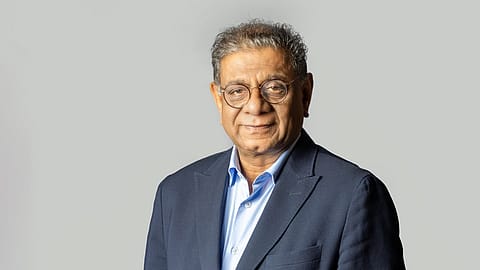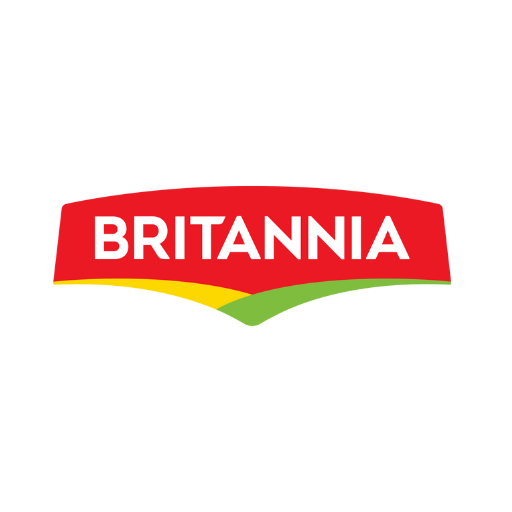Danone’s second coming: Why the French giant is betting big on nutrition to crack India
Danone COO Vikram Agarwal talks about the company's plans for the Indian market, its learnings from its erstwhile dairy business and much more.

The 27.3 billion euro French food and beverage major, Danone, is yet again trying to dial up its presence in the Indian market, this time, through its nutrition business. The company’s maiden attempt to spread its wings in India was through a joint venture with Britannia Industries and later through a fully-owned Indian subsidiary which sold value-added dairy products. While its JV with Britannia ended in a bitter legal feud, its dairy business despite its high-quality product portfolio didn't succeed either and the company eventually exited the dairy business in 2017. However, India, says its Indian origin COO, Vikram Agarwal, can’t be ignored. In an interview with Fortune India, Agarwal talks about Danone’s plans for the Indian market, its learnings from its erstwhile dairy business and much more.
Excerpts:
India is a market where nutrition is a huge concern. What kind of opportunities does the Indian market offer Danone?
What we are seeing in India is a major transition of consumers towards healthy food. We find a lot more health consciousness not just in the urban population but also in semi-urban. The consciousness that diet can help them overcome lifestyle diseases is happening at a much greater pace than the rest of the world. If you talk about the industry, the growth rates that you see, the economic boom (the West has been flat for some time now), nobody in the consumer sector is willing to accept anything less that 10%-15% growth. Our business in India is disproportionately small and there is a clear recognition that this is a market we are not participating in. We have the right products and portfolio to participate, but we don’t have the scale. We need to find a way to build scale in India and get into a situation where it is one of the strategic growth bets of Danone. That’s not just because everybody talks about India, but if I just use a detective logic in the Danone context, we are big in the US and in Europe, but it’s all in single-digit growth. If you grow by 3%-4% in these countries then you are considered winners, we are growing in higher single digits in Canada, we have high growth, Africa is also doing well too, but we can’t say that our next $2 billion will come from these countries.
Most global brands have felt the need to localise in India in order to appeal to the consumers. In fact, when you were in the dairy business, you had localised by launching products such as lassi and mishti doi. Are also you planning to localise your nutrition portfolio?
Anybody who wants to operate in India has to Indianise the products. You know we are not new to India and we have localised in this portfolio too. One of our leading brands is Protinex, which is an acquired Indian brand. We acquired it from Wockhardt in 2017, the other brand is Farex, these two are quintessential Indian brands. You can’t succeed in India without developing a product which is suitable for the local nutritional market. The nutritional profile which Indians need is very different from the nutritional profile which Europeans need. The idea is to take global nutritional science and apply it to develop a product which suits the Indian customer.
You said that your greatest challenge in India is scale. What’s your game plan?
Recommended Stories
We have a good reach in the pharmacy channels; we don’t have that good a reach in traditional retail. Can we have the distribution might of Unilever in the next three years? Certainly not. It took them decades to put it together. While we are doing organically whatever we can, we are also open to partners. We will look at B2B distribution companies as well as other established companies (non-competing) which have a reach in the market. It could be another FMCG company which has a reach in the market.
You exited dairy in India a few years ago. What have been the learnings from that business?
An important learning from that was to make our products relevant from the point of view of price-point and product composition. If we ever decide to come to India with dairy, we need to be very sure what we put in our products is consumer relevant and is at a price-point that appeals them. The other point we took note of was distribution. When you are doing a cold chain product and distributing it throughout the country it’s not so easy. It's not the US where I can hire warehouses, hire as many trucks I want and race them throughout the country. In India we need to build the supply chain, the cold supply chain doesn’t exist. The model where you have one centralised manufacturing unit and you try to distribute across the country a product which is not necessarily appealing to the consumer doesn’t work. It’s a question of creating the right business model and the right product.
It was sad to discontinue the dairy business but we were unable to get the relevance at that point of time.
(INR CR)
Coming back to your nutrition portfolio, are you looking at democratising infant food or products like Protinex in terms of packaging, pricing etc so that it appeals to the masses? After all India is a sachet market.
Yes, India is a sachet market but over here you also need a full portfolio. There are consumers who are prepared to pay for baby food as much as any other consumer around the world, and there is a mass market also for which you have to cater to. I think to succeed in the Indian market we need to have a portfolio and we need to play the whole portfolio game. By just being a mass company, you may be able to generate volumes but you won’t be able to generate business value. As far as sachets are concerned, we have just introduced sachets for some of our infant food brands. There is a place for sachets as well as cans.
It will be the distribution which will be the game-changer.
Are there newer categories of nutrition that you would look at?
Certainly. We are already there in adult nutrition with Protinex. It is currently available in powder format, and it can go into drinkable format too. A drinkable format could increase consumption as you can carry it with you wherever you go. Globally, we are strong in kids’ nutrition. The 6-18 age group is an area in which we are strong. We have specialised kids’ nutrition products in countries such as Mexico, Thailand and Indonesia. We know to populate the entire area of nutrition – adult nutrition, kids nutrition and the other area we are bullish about is medical nutrition. For instance, cancer care, the tendency in India is let’s cure them and take them home and take care of their nutrition after that. Around 70% of the recovery depends on the hospital procedure and 30% depends on home care. We want to get into post-curative care, which is a very big category in Europe and even in China. So, kids, expansion of adults’ nutrition and medical nutrition are the areas we are looking at.
Climate change disruptions are becoming a huge cause of concern for businesses world over. How do business models need to evolve?
Business models (not just from a climate perspective) have to become more responsive to the consumer and the customer. It is economically wasteful for the retailer in the store to keep three weeks of inventory. Your factory needs to be agile enough to supply. It is bigger than climatology. It is about developing businesses which are agile and able to respond quickly. This will ultimately impact climate. If I am not holding a large inventory, I am also not locking up money as well as natural resources. Having 50 tonnes of yogurt sitting in a warehouse doesn’t generate value, it will only generate value when it is consumed. It's all about making your system more agile. That is where the role of technology and digitalisation comes in. For instance, AI is not an evolution, it’s a revolution. It helps in improving various facets of doing business.
How does AI help in making supply chains more efficient?
AI sets the demand. You know what are the conditions which lead to order placement. AI can sense that order will come from a particular geography or locality. You start producing as per the demand. AI can allocate what is the most efficient source to supply to say Ghatkopar in Mumbai. It's all about making the system efficient. We have put in huge amount of focus in developing AI models, language models, language to text, language to machine control – it’s a huge focus.

